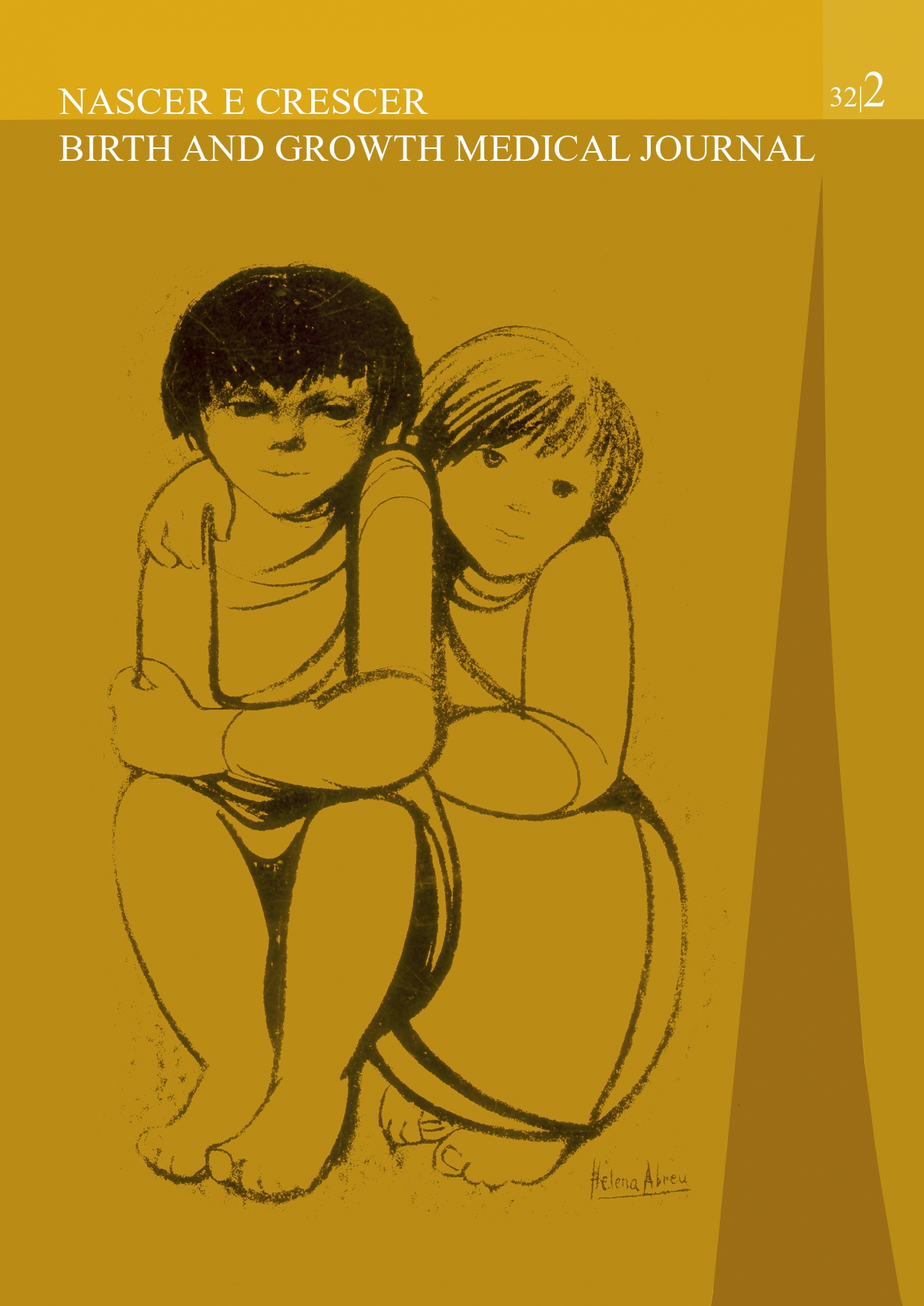Young-onset acromegaly and gigantism: Causes and clinical features of growth hormone overproduction
DOI:
https://doi.org/10.25753/BirthGrowthMJ.v32.i2.26186Keywords:
acromegaly, gigantism, cause, clinical featureAbstract
Depending on the age of onset, the excessive release of growth hormone (GH) − most commonly by a pituitary tumor − and subsequently of insulin-like growth factor 1 (IGF1) can cause acromegaly and gigantism.
The purpose of this study was to describe the clinical manifestations and main known causes of GH overproduction.
GH-releasing hormone and IGF1 can result in a series of physical traits and comorbidities due to hormonal imbalance and somatic overgrowth. To date, several syndromes and genetic mutations have been linked to the etiology of acromegaly.
Downloads
References
Colao A, Grasso LFS, Giustina A, Melmed S, Chanson P, Pereira AM, et al. Acromegaly. Nat Rev Dis Primers 2019; 5(1):20. doi: https://doi.org/10.1038/s41472-019-0071-6.
Rostomyan L, Daly AF, Beckers A. Pituitary gigantism: Causes and clinical characteristics. Ann Endocrinol (Paris) 2015;76(6):643-9; doi: https://doi.org/10.1016/j.ando.2015.10.002.
Gadelha MR, Ksuki L, Korbonits M. The genetic background of acromegaly. Pituitary. 2017;20(1):10-21; doi: https://doi.org/10.1007/s11102-017-0789-7.
Daly AF, Rixhon M, Adam C, Dempegioti A, Tichomirowa MA,Beckers A. High prevalence of pituitary adenomas: across- sectional study in the province of Liege, Belgium. J ClinEndocrinol Metab 2006; 91(12):4769–75. doi: https://doi.org/10.1210/jc.2006-1668.
Kwon O, Song YD, Kim SY, Lee EJ Rare Disease Study Group,Science and Research Committee, Korean Endocrine Society, Nationwide survey of acromegaly in South Korea. ClinEndocrinol (Oxf) 2013; 78(4):577–85. doi: https://doi.org/10.1111/cen.12020.
Holdaway IM, Rajasoorya C, Epidemiology of acromegaly. Pituitary 1999; 2(1):29–41. doi: https://doi.org/10.1023/a:1009965803750.
Nabarro JD. Acromegaly. Clin Endocrinol 1987; 26(4):481–512.
Reid TJ, Post KD, Bruce JN, Nabi Kanibir M, Reyes-Vidal CM, Freda PU. Features at diagnosis of 324 patients with acromegaly did not change from 1981 to 2006: acromegaly remains under-recognized and under-diagnosed. Clin Endocrinol 2010; 72(2):203–8. doi: https://doi.org/10.1111/j.1365-2265.2009.03626.x.
Melmed S. Medical progress: Acromegaly . N Engl J Med 2006; 355(24): 2558–73. doi: https://doi.org/10.1056/NEJMra062453.
Molitch ME. Clinical manifestations of acromegaly. Endocrinol Metab Clin North Am 1992; 21(3):597–614.
Chanson P, Salenave S. Acromegaly. Orphanet J Rare Dis 2008; 3:17. doi: https://doi.org/10.1186/1750-1172-3-17.
Katznelson L., Laws ER Jr, Melmed S, Molitch ME, Murad MH, Utz A, et al. Acromegaly: An Endocrine Society Clinical Practice Guideline. JCEM 2014; 99(11):3933-51. doi: https://doi.org/10.1210/jc.2014-2700. doi:10.1210/jc.2014-2700.
Salenave S, Boyce AM, Collins MT, Chanson P. Acromegaly and McCune-Albright Syndrome. JCEM 2014; 99(6):1955-69. doi: https://doi.org/10.1210/jc.2013-3826.
Schöfl C, Honegger J, Droste M, Grussendorf M, Finke R, Plöckinger U, et al. Frequency of AIP gene mutations in young patients with acromegaly: a registry-based study. JCEM 2014; 99(12):E2789-E2793. doi: 10.1210/jc.2014-2094. doi: https://doi.org/10.1210/jc.2014-2094.
Beckers A, Rostomyan L, Potorac I, Beckers P, Daly AF. X-LAG: How did they grow so tall? Ann Endocrinol (Paris) 2017; 78(2):131-6. doi: https://doi.org/10.1016/j.ando.2017.04.013.
Sargent J. X-linked acrogigantism – genetic characterization of a newly described paediatric growth disorder. Nat Rev Endocrinol 2015; 11(2):64. doi: https://doi.org/10.1038/nrendo.2014.230.
Gadelha M.R., Kasuki L., Korbonits M. The genetic background of acromegaly. Pituitary. 2017;20:10–21. doi: https://doi.org/10.1007/s11102-017-0789-7.
Downloads
Published
How to Cite
Issue
Section
License
Copyright (c) 2023 Raquel Vaz de Castro, Joana Faustino, Florbela Ferreira, Lurdes Sampaio

This work is licensed under a Creative Commons Attribution-NonCommercial 4.0 International License.
Copyright and Authors' Rights
All articles published in Nascer e Crescer - Birth and Growth Medical Journal are Open Access and comply with the requirements of funding agencies or academic institutions. For use by third parties, Nascer e Crescer - Birth and Growth Medical Journal adheres to the terms of the Creative Commons License "Attribution - Non-Commercial Use (CC-BY-NC)".
It is the author's responsibility to obtain permission to reproduce figures, tables, etc. from other publications.
Authors must submit a Conflict of Interest statement and an Authorship Form with the submission of the article. An e-mail will be sent to the corresponding author confirming receipt of the manuscript.
Authors are permitted to make their articles available in repositories at their home institutions, provided that they always indicate where the articles were published and adhere to the terms of the Creative Commons license.


